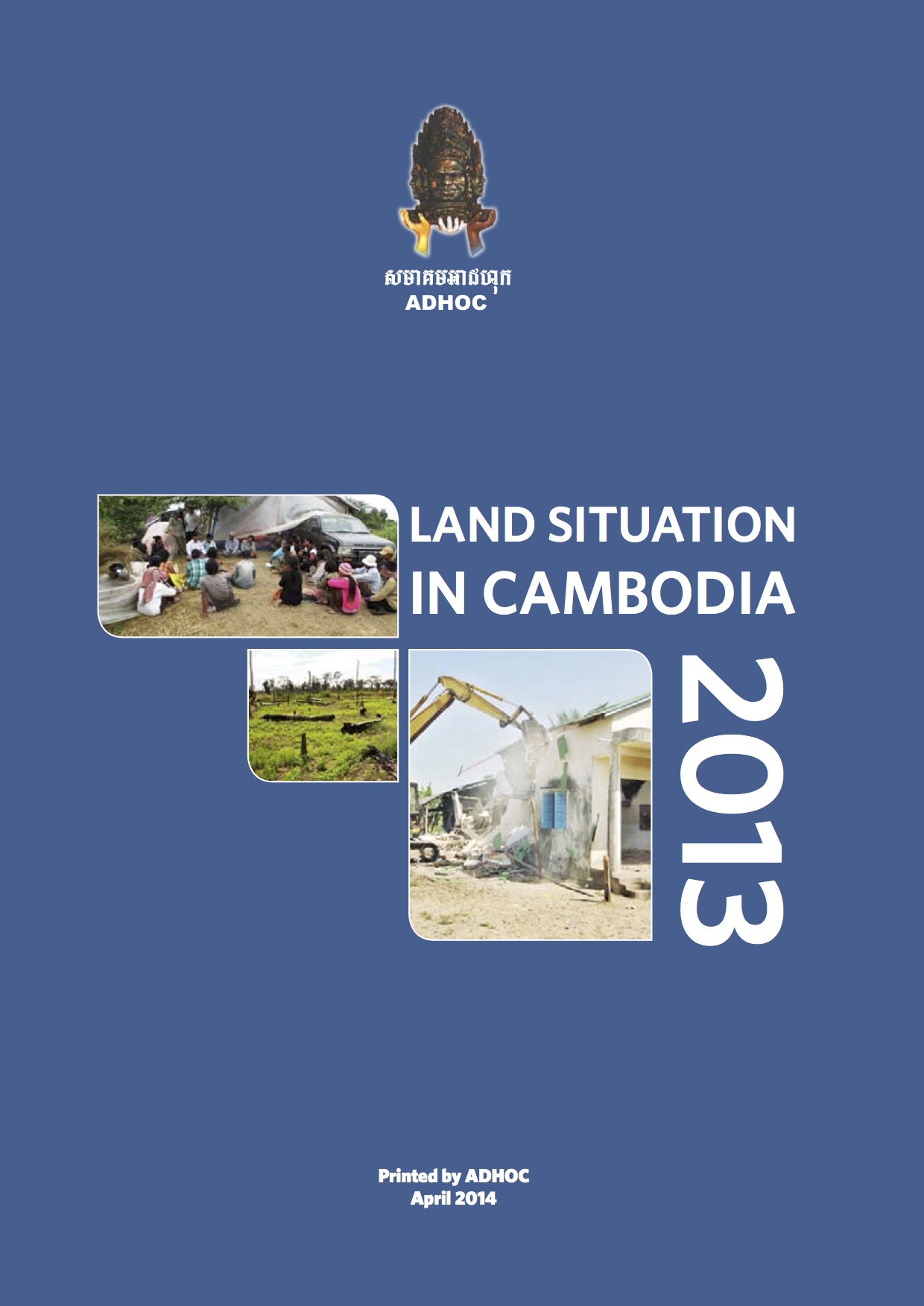Latest Entries
Land Situation in Cambodia
Publication Year: 2014 / Sources: ADHOCIn May 2012 Prime Minister Hun Sen issued Directive 001 (also known as Order 01BB) on ‘Measures to strengthen and enhance the effectiveness of management of economic land concessions (ELCs)’ announcing a moratorium on the granting of new ELCs, the review of existing ELCs and the implementation of the so-called “leopard- skin” (or “tiger-skin”) policy, with the aim to allow communities to live side by side with the concessions. In the framework of the implementation of Directive 001, a new land registration campaign was implemented by youth volunteers to speed up the process of land registration, which had been previously carried out, often ineffectually, through sporadic or systematic registration systems.
Land Grabbing in Cambodia: Narratives, Mechanisms, Resistance
Publication Year: 2012 / Sources: Land Deal Politics Initiative (LDPI)Rural areas in Cambodia have been the target of large-scale land acquisitions since the late 1990s. As of March 2012, economic land concessions in Cambodia covered more than 2 million hectares, equivalent to over half of the country’s arable land. In this paper, we discuss the policy narratives and discursive strategies that are employed by various actors to justify and legitimize large-scale land acquisitions. We then analyze the underlying mechanisms of such acquisitions and investments and examine how they are entangled with donor-assisted land use planning efforts. Finally, we explore local people’s strategies of resistance.
Land Grabbing & Poverty in Cambodia: The Myth of Development
Publication Year: 2009 / Sources: League for the Promotion and Defense of Human Rights (LICADHO)While forced appropriation of land is a longstanding problem in Cambodia, recent years have seen an explosion in related violations. In cases monitored by LICADHO between 2003 and 2008, a total of 53,758 families fell victim to land-related human rights abuses, including land-grabbing, forced evictions and destruction of property. According to official statistics on the average size of Cambodian families, this represents more than a quarter of a million Cambodians – and that’s just in the 13 provinces and municipalities where LICADHO maintains a presence.
Forced Eviction and Resettlement in Cambodia: Case Studies from Phnom Penh
Publication Year: 2010 / Sources: Fordham Law SchoolThis Article culminates a project undertaken by the Walter Leitner International Human Rights Clinic (hereinafter “Leitner Clinic”) at Fordham Law School to examine the effects of land resettlement on communities that were forcibly evicted or are at risk of forced eviction from their homes, and, in particular, the effects of forced evictions on the Boeung Kak Lake community in central Phnom Penn and on people living with HTV/AJDS (“PLWHA”). This Article is based on field research the Leitner Clinic conducted in Cambodia in the fall of 2008. While in Cambodia, the Leitner Clinic interviewed families from four different communities: resettlement camps in Dam Nak Trayoeng and An Dong; Boeung Kak Lake, where residents are facing forced eviction; and the Green Shelters at Borei Keila where forcibly evicted PLWH1A and their families await resettlement. The Leitner Clinic also met with local human rights and land rights organizations and organizations working with PLWHA.





